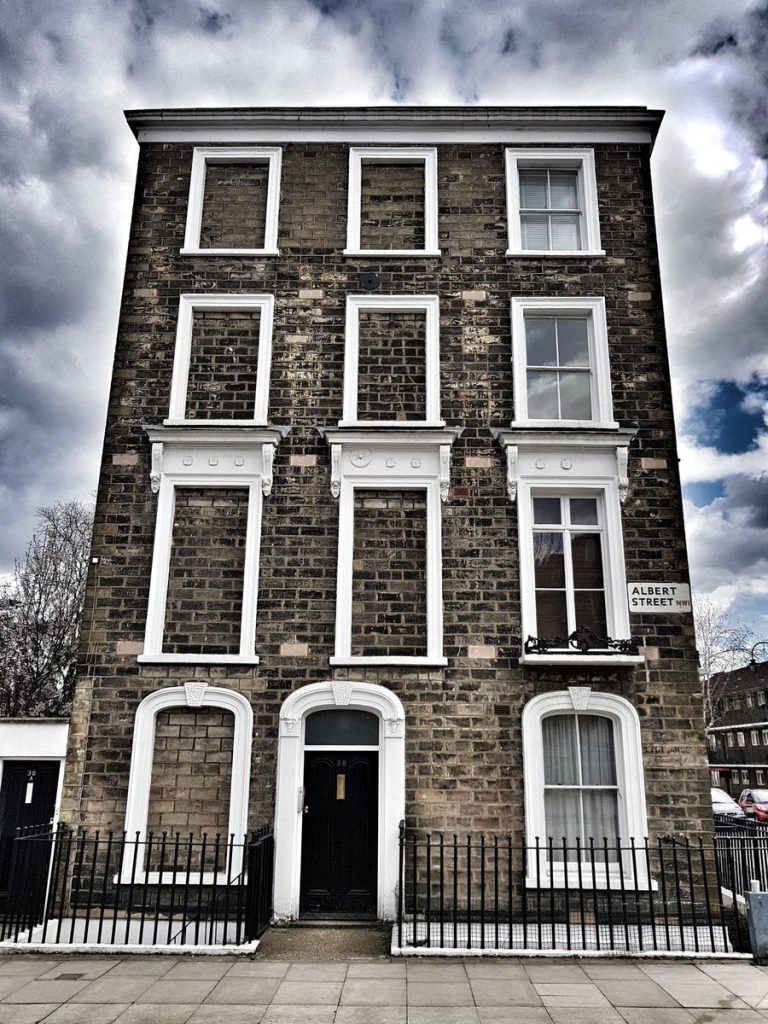
Many homes with bricked-up windows represent integral icons in British towns and cities. Why so? In this podcast, we dive back into history to discover the Window Tax, which was in effect for more than 150 years up until 1851. We shall explore why such a tax came about; what its intended and unintended consequences were, and what role it had in revenue collection for the Crown, alongside other indirect taxes. Finally, we shall take a look at how tax avoidance behavior has left a permanent and observable mark on architecture across the world. This is a story of incredible ingenuity on the part of Englishmen in asserting their liberties against parliament by exploiting loopholes in legislation to free themselves from the burdens of taxation.
–
–
–
–
Sources:
Image: Andy Billman, June 2021, retrieved from https://www.creativeboom.com/inspiration/daylight-robbery/
Podcast jingles: © Ladislav Weyrostek | Dreamstime.com
Content:
Conway, M. R. 2019. And You May Ask Yourself, What Is That Beautiful House: How Tax Laws Distort Behavior through the Lens of Architecture. Columbia Journal of Tax Law, vol. 10, no. 2, 2019, p. 165-198. HeinOnline, https://heinonline.org/HOL/P?h=hein.journals/colujoutl10&i=140.
Dowell, S. 1884. A History of Taxation and Taxes in England from the Earliest Times to the Present Day, vols. 2 and 3. London: Frank Cass & Co. (Reprinted in 1965 in Reprints of Economic Classics series; New York: Kelley).
George, M. D. 1926. London Life in the XVIIIth Century. New York: Alfred A. Knopf.
Glantz, A. E. 2008. A Tax on Light and Air: Impact of the Window Duty on Tax Administration and Architecture, 1696–1851. Penn History Review. 15(2): Article 3.
Greene, R. 24 October 1999. And you thought the IRS was heartless, Chicago Tribune, https://www.chicagotribune.com/news/ct-xpm-1999-10-24-9910240378-story.html
Heimmermann, D. 1999. The Old Regime Fiscal System and the Decline of the French Tanning Industry, 1759-1791. Proceedings of the Western Society for French History, 26, 173–183.
House of Commons. 1819. Motion for the Repeal of the Window Tax in Ireland, House of Commons Debates, May 5, 1819. In Hansard House of Commons Debates, vol. 40, cc 126–48.
House of Commons. 1848. Lowest Classes Under Assessment, House of Commons Debates, February 24, 1848. In Hansard House of Commons Debates, vol. 96, cc 1259–97.
Keen, M. & Slemrod, J. 2021. Rebellion, Rascals, and Revenue: Tax Follies and Wisdom through the Ages. Princeton University Press, ISBN: 9780691199542
Oates, W. & Schwab, R. 2015. The Window Tax: A Case Study in Excess Burden. Journal of Economic Perspectives, 29 (1): 163-80. DOI: 10.1257/jep.29.1.163
Orain, A. 2010. Progressive indirect taxation and social justice in eighteenth-century France: Forbonnais and Graslin’s fiscal system. European Journal of the History of Economic Thought, 17(4), 659–685. https://doi.org/10.1080/09672567.2010.501108
Pierpoint, S. J. 2017. The importance of direct taxation to the Fiscal-military state in Early Modern Britain. Structural Change & Economic Dynamics, 41, 13–28. https://doi.org/10.1016/j.strueco.2016.12.002
Steinvorth, D. 2 August 2010., Finding Swimming Pools with Google Earth: Greek Government Hauls in Billions in Back Taxes, Spiegel International. https://www.spiegel.de/international/europe/finding-swimming-pools-with-google-earth-greek-government-hauls-in-billions-in-back-taxes-a-709703.html
UK Parliament, 2021, Taxes the 18th century way, https://www.parliament.uk/about/living-heritage/transformingsociety/private-lives/taxation/overview/taxes18thcentury/
Ward, W.R. 1952. The Administration of the Window and Assessed Taxes, 1696-1798. The English Historical Review, Volume 67, Issue 265, pp. 522–542, https://doi.org/10.1093/ehr/LXVII.CCLXV.522
Recent Comments